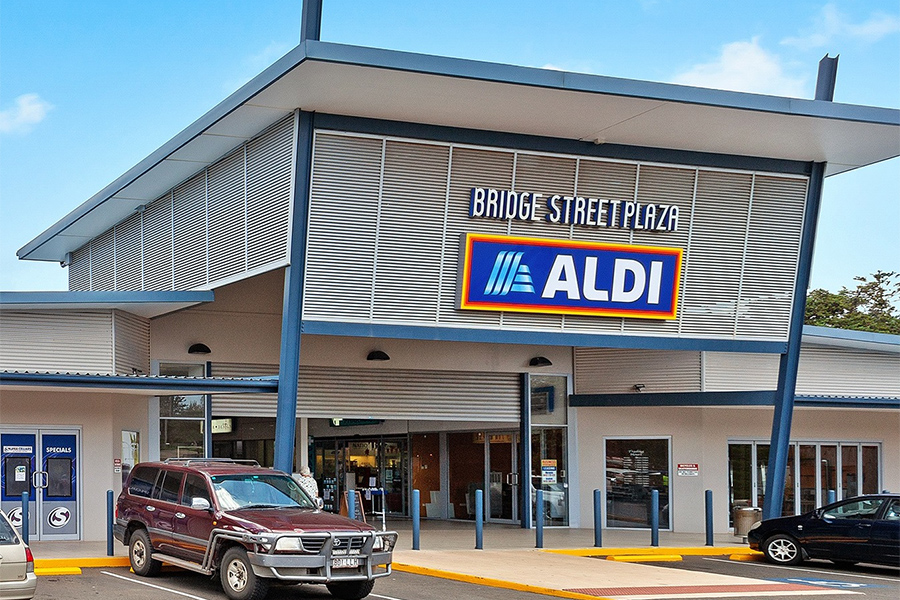See Sid Sharma speaking at the Big Guns lunch – video below
Retail sales growth – the new normal?
Australian retail sales in 2015 increased 4.2% compared to the previous year with December month-on-month sales at 4.0%. This remains below the long-term average of ~6.1% (1985 – 2015) but remains ahead of the five-year average of ~3.8%. Notably, December data correlates well with the post-GFC average of ~4.2%. While December sales showed the highest discretionary sales upturn in 11 years (at 5.5%), it may be premature to anticipate a significant upward swing in retail sales and consumer sentiment. Certainly, when we listen to our retailers, they tell us to be balanced in our optimism. Macroeconomic factors will largely determine sales growth in 2016. The United States’ recovery is encouraging, however volatility in China may have a bigger bearing on how our local economy responds.
Reading through the numbers, there are some important underlying factors we should consider:
1 Supermarket price wars
The supermarket chains are all aggressively vying for the consumer’s wallet. Prices have dropped which has subdued growth rates quoted above. A drop in prices, however, has seen increases in volume which in turn mean more visitation.
Supermarkets are now an extension of a consumer’s pantry – our ‘weekly grocery shop’ is becoming a thing of the past in metropolitan regions. We now tend to shop 2 or 3 times a week. Our customer has changed, and so should the way we measure performance.
2 Online Expenditure
The ABS data remains one of the better barometers of retail expenditure in Australia. We should be mindful, however, that online sales data capture remains challenging, which the ABS has noted. The retail trends we often look to are still grappling with how to work with online sales. There have been some advancements in this space lately, and the ABS is working to better incorporate online expenditure into its analysis.
The NAB online retail index recently noted that online growth had dropped dramatically coinciding with the fall in the Australian dollar. This also coincided with an upturn in discretionary sales leading into Christmas 2015. Whether this is a trend or an aberration is yet to be determined. A deeper understanding of the correlation however is more important.
Suffice to say, the last eight years have taught Australian consumers to be particular with their spending. We save more than ever and carefully select where our wallet goes. A particular consumer means we all have to continue to lift our game.
Listen, observe, and continually change to ensure that we are providing our retailers and our consumers with what they want.
Listen to retailers
Several national retailers have recited a story to me which they say is oft repeated during renewal discussions. It usually goes like this:
• an owner demands a certain increase in rental while the retailer explains they cannot maintain the rent and will have to vacate if the rent is not reduced
• the retailer and centre owner are unable to agree terms • much to the chagrin of the owner, the retailer vacates the premises on expiry of their lease
• 3–6 months later the retailer re-enters the centre, at better terms than they would have previously agreed, with a significant fit-out incentive
While the details vary, the above seems to happen far more frequently than we would expect. Retail remains, as ever, the most dynamic of property sectors. Our willingness to listen and hear our retailers will help guide our decision-making. Sometimes pragmatism needs to prevail and, if we hear what our retailers are saying, we can manage challenging situations well in advance.
Every year the National Retailer Federation (USA) holds a ‘retail big show’. It is one of the largest retailer conferences in the world and always presents unique insights on retailing. Christian Davies, creative director of Fitch, remarked: “Ours is an industry which has spent its recent history implementing systems and behaviours which were antithetical to rapid change. We don’t have to think back very far to when the definition of retail nirvana was a chain of stores which all looked identical wherever they were in the country and which stayed true to rigid standards over time. […] Breaking this paradigm and moving stores from being largely ‘set’ to becoming fluid, living things again is the biggest hurdle we face.”
Davies goes on to say: “We have to become more comfortable with risk, […and…] have to get away from the pursuit of perfection and the entropy that this creates. By the time you’ve reached your ‘perfect solution,’ the competition will have moved on.”
Collaborate with retailers, consumers and peers
Our retailers are hearing what customers are saying. As owners of retail property, our challenge is to keep up with the pace of change.
If the trends show that moderate but consistent growth is the new normal, sales performance will be driven by retailers that are responsive to change and responsive to the needs of customers. Retailers will try new things, experiment, fail and try again.
We need to try new things, engage with our customers and help our retailers traverse the new retail landscape. No retailer is immune to the forces of change, but it is agility in management that will determine which retailers are best at adapting to it.
Evolve and embrace change
We recently committed to the rollout of digital media and Wi-Fi hubs in all of our Australian shopping centres. This is unprecedented in neighbourhood centres in Australia. The online experience does not exist in a vacuum. ‘Multi-Option’ retailing or ‘Omni-Channel’ retailing is already a thing of the past.
Progressive retailers are providing consumers with a seamless integration of the virtual and the bricks and mortar. The channels are not mutually exclusive – they overlap. We are entering into an age of transparency. There are few secrets that retailers can keep from consumers – often consumers know more about a product than a store salesperson. Encouragingly, our industry continues to embrace this shift to transparency and openness. The SCCA is working on encouraging a formal dialogue amongst major owners in relation to customer safety – that is, we all share information in relation to how we all provide a safe space for our customers. Given we all have the same aim, it is heartening that we, as an industry body, are collaborating to ensure that our centres provide a safe place for communities to gather.
If we continue this discourse and transparency with our retailers and consumers, we are better positioned to deal with the changes in the market.
The year of Centre Management
With over 80 shopping centres in Australia and New Zealand, our geographical spread necessitates agility in management. We continue to see value in retail centres that are convenient community hubs in the catchments they reside in. Speed of decision-making and certainty of strategy, with measured risk, remains the priority for the way we manage our centres. Traditional definitions may have evolved – at SCA we talk about convenient centre and destinations. Convenient centres are at the forefront of our strategy.
In managing the geographic spread, the upside of scale needs to be balanced with ensuring that each centre and asset caters for the particular demographic it is in. Each region has its unique microeconomic challenges. For example, having aspirational brands is important in catchments that are climbing the socioeconomic ladder but, if a market is dealing with labour force transition, we need to focus on a mix that is relevant to the customer today. A cookie-cutter approach has pitfalls to avoid and tenancy mix should avoid homogenisation as a core objective. Customers demand personalisation and a retail offer that addresses their requirements.
For this reason, we are evolving our mode to focus on a Regional Property Management model that leverages local expertise in the catchments the centres reside in. This approach, balanced with a National Facilities Management model, ensures that we also benefit from the advantages scale brings in managing outgoings effectively.
Our head office management team remains relatively small, but agile. While head office teams continue to work with larger national retailers, our local centre management teams are better positioned to work with our communities and our local retailers. They understand the drivers in their catchment and how best to maximise sales for the retailer – which remains philosophically the driver behind retail property performance. The role of head office is to enable our onsite teams to effectively manage and unlock value.
Empowering our people in centre management teams to make decisions, innovate and create is our 2016 objective. A-REITs are designed to provide investors direct access to commercial property and if we continue to work on the basics – to engage with retailers, to market well, and have the highest standard of convenience, presentation and safety – we will continue to provide a retail offer that remains in line with what consumers and our retailers demand.





















